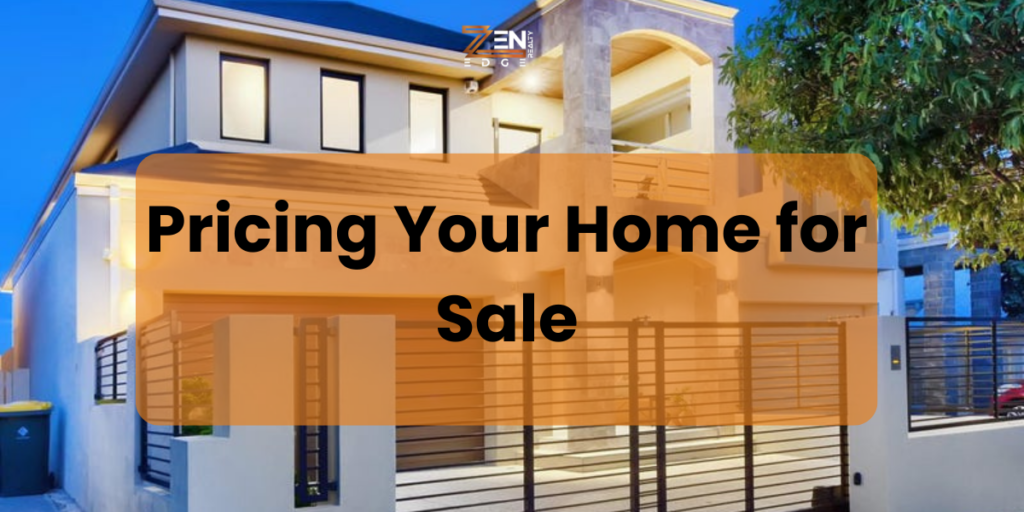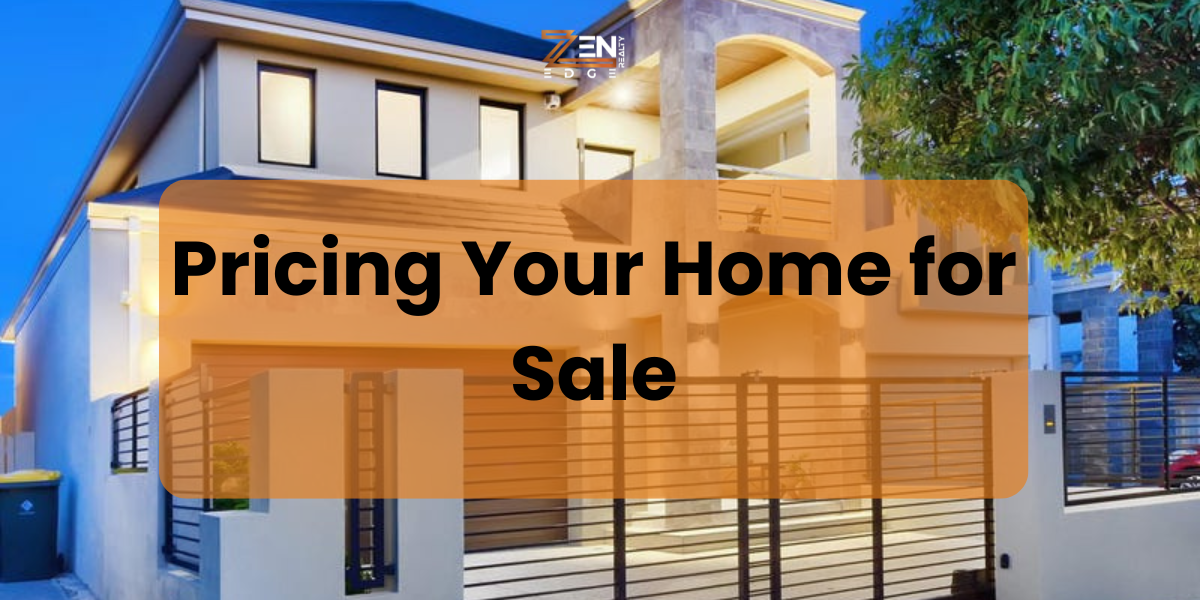
Selling your home can be an exciting but daunting process, especially when it comes to setting the right price. Price your property too high, and you might scare away potential buyers. Price it too low, and you might not get the return you were hoping for. Here’s a straightforward guide to help you pricing your home effectively in the Australian market.
1. Understand the Market
Before you set a price, it’s essential to understand the current market conditions. The Australian property market can vary significantly from one region to another. In some areas, demand might be high, driving prices up, while in others, it might be a bit sluggish. Research recent sales of similar properties in your area. Websites like Domain and Realestate.com.au can be helpful for this.
2. Get a Professional Valuation
Consider getting a professional valuation from a licensed appraiser. They’ll assess your property based on various factors, including its size, condition, and location. This gives you a solid foundation for setting a realistic price. Many real estate agents also offer free property appraisals, which can be a useful starting point.
3. Compare Similar Properties
Look at recent sales of homes similar to yours in the neighbourhood. Pay attention to properties with similar features such as the number of bedrooms, bathrooms, and overall size. This comparison can give you a good idea of what buyers are willing to pay for a property like yours.
4. Consider Your Home’s Unique Features
Think about what makes your home stand out. Does it have a beautiful garden, a recently renovated kitchen, or stunning views? Unique features can justify a higher price, so make sure to highlight these when you’re setting your price.
5. Factor in the Costs of Selling
Remember to account for the costs associated with selling your home. These can include agent fees, advertising costs, and any necessary repairs or improvements. Subtracting these costs from your expected sale price can help you determine a more accurate listing price.
6. Be Mindful of Pricing Strategies
Some sellers choose to set a slightly lower price to attract more buyers and create competition, potentially leading to a higher final sale price. This strategy can work well in a hot market. Alternatively, if your area is less competitive, pricing your home slightly higher and being open to negotiations might be a better approach.
7. Stay Flexible
Market conditions can change, and your initial price might need adjusting. If your home isn’t getting the interest you expected, be prepared to review and possibly lower your price. Flexibility can help ensure a quicker sale.
8. Seek Advice from Real Estate Agents
Real estate agents have experience and insights into local market trends. They can provide valuable advice on setting the right price based on their knowledge and the current market conditions. Don’t hesitate to ask for their input and consider their suggestions carefully.
9. Timing Matters
Timing can have a significant impact on your home’s sale price. The real estate market often experiences seasonal fluctuations, with some periods being more advantageous for sellers. For example, spring and early summer are typically popular times for home buying in Australia, as the weather is favourable and families prefer to move before the new school year starts. Listing your home during these peak times might help you secure a better price. Conversely, selling during a slower season could mean less competition, which might necessitate a more flexible pricing strategy.
10. Understand Buyer Psychology
Understanding how buyers think can help you price your home more effectively. Buyers often perceive homes priced just below a round number (e.g., $699,000 instead of $700,000) as being more attractive. This pricing strategy can make your property stand out in searches and attract more interest. Additionally, setting a price that falls within the common price brackets for your area can help your listing appear in relevant searches.
11. Leverage Online Tools and Resources
Online tools can offer a wealth of information about property values and market trends. Websites and apps like CoreLogic, Property Value, and Pricefinder provide estimates and comparative data that can aid in setting a competitive price. While these tools are useful, they should complement, not replace, professional advice from real estate agents or appraisers.
12. Consider Your Home’s Condition
The condition of your home plays a crucial role in its market value. Homes that are well-maintained, clean, and updated typically command higher prices. If your home has significant wear and tear or outdated features, investing in minor repairs or renovations could increase its appeal and value. This doesn’t mean you need to undertake major renovations, but small improvements like fresh paint or modern fixtures can make a big difference.
13. Evaluate the Competition
Take note of other homes for sale in your area and their asking prices. This can give you insight into how your property stacks up against the competition. If there are many similar homes on the market, you may need to price yours competitively to stand out. Conversely, if your home has unique attributes that set it apart, you might justify a higher price.
14. Gauge Buyer Interest
Pay attention to the level of interest your property generates. If you’re receiving lots of inquiries and viewings, it could indicate that your price is too low. On the other hand, if you’re not getting much traction, it may be time to reassess and possibly lower the price. Your real estate agent can provide feedback from potential buyers to help you gauge the market response.
15. Use a Real Estate Agent’s Expertise
A skilled real estate agent can be an invaluable asset in pricing your home. They can provide a comparative market analysis (CMA), which includes detailed information about recent sales and current listings in your area. This analysis helps to set a price that aligns with market trends and buyer expectations. Agents also have experience in negotiating and can advise on pricing strategies that best suit your situation.
16. Prepare for Negotiations
Most buyers will expect some room for negotiation. Setting a slightly higher initial price can give you flexibility to negotiate while still achieving a satisfactory final sale price. Be prepared for offers below your asking price and decide in advance how much you are willing to negotiate.
17. Highlight Market Trends
Stay informed about broader market trends that could influence your home’s price. For instance, if interest rates are rising, it might impact buyer affordability and, consequently, your pricing strategy. On the other hand, if the local economy is booming and job growth is strong, demand for housing might increase, allowing you to set a higher price. Keeping abreast of such trends can help you make more informed decisions and set a competitive price that aligns with current market conditions.
18. Assess the Competition
Regularly evaluate the competition in your area. If there are many similar properties on the market, you’ll need to price your home competitively to attract buyers. Look at how long these properties have been listed and whether they’ve had any price reductions. If similar homes are selling quickly, it may indicate that the market is hot, and you could price yours higher. Conversely, if homes are sitting on the market for extended periods, you may need to adjust your price accordingly.
19. Consider the Psychological Impact of Pricing
Pricing your home strategically can influence buyer perceptions. For example, pricing your home just below a round number (e.g., $699,000 instead of $700,000) can make it appear more affordable and increase the number of inquiries. This psychological pricing strategy can create the perception of a better deal, potentially drawing in more buyers.
20. Factor in Your Urgency to Sell
Your personal circumstances can affect how you price your home. If you need to sell quickly due to relocation, financial reasons, or other factors, you might consider setting a more competitive price to expedite the sale. On the other hand, if you have more flexibility and are willing to wait for the right offer, you might price it slightly higher and be prepared for a longer selling period.
21. Leverage Professional Staging and Photography
A well-presented home can command a higher price. Professional staging and high-quality photography can make your property stand out in listings and attract more buyers. Well-staged homes often sell faster and at a better price because they create a positive impression and help buyers envision themselves living in the space.
22. Monitor Feedback from Open Houses and Inspections
If you’re hosting open houses or private inspections, pay attention to the feedback from potential buyers and their agents. Their comments can provide valuable insights into how your home is perceived and whether the price is appropriate. If multiple buyers express concerns about the price or the condition of the home, it might be time to reassess your pricing strategy.
23. Adjust Based on Market Dynamics
The property market can fluctuate, and your initial pricing strategy might need adjustment. If you notice a slowdown in buyer interest or a shift in market conditions, be prepared to re-evaluate your price. Regularly reviewing your pricing strategy in light of current market dynamics ensures that your home remains competitive and attractive to buyers.
24. Seek Expert Advice for Unique Properties
If your home has unique features or is in a niche market (e.g., a historic property or a luxury home), seeking advice from specialists in those areas can be beneficial. Real estate agents with experience in unique or high-end properties can provide targeted insights and help you set a price that reflects the distinct value of your home.
25. Understand Legal and Financial Implications
Ensure you’re aware of any legal and financial implications related to the sale of your home. This includes understanding capital gains tax, which might impact your net profit, and any legal requirements for disclosure of property conditions. Consulting with a financial advisor or solicitor can help you navigate these aspects and avoid surprises during the selling process.
26. Leverage Online and Social Media Marketing
Utilising online and social media platforms for marketing can increase your home’s visibility and attract a wider audience. Effective online marketing strategies can create buzz and drive interest, which can be especially useful if you’re aiming for a higher price. Ensure your online listings are accurate and engaging, and consider using social media to reach potential buyers.
27. Evaluate the Benefits of Auctions vs. Private Sales
Decide whether an auction or private sale is the best approach for your home. Auctions can create a sense of urgency and competition, potentially leading to a higher sale price. However, they also come with risks, such as the possibility of selling below your desired price if bidding does not meet expectations. Private sales offer more control over the process and can be less stressful, though they may not generate the same level of competition.
Discover the ZenEdge Realty advantage! Get an expert appraisal, confidently sell, and find your dream home with us. Get an Appraisal, Buy, or Sell with the Experts! Visit www.zenedgerealty.com.au.
Conclusion
Pricing your home is a multifaceted process that requires a combination of market knowledge, strategic thinking, and expert advice. By staying informed about market trends, considering your personal circumstances, and leveraging professional help and marketing strategies, you can set a price that attracts buyers and maximises your return. Remember, the goal is to find a balance between a price that reflects the true value of your home and one that appeals to potential buyers in the current market

Leave a Reply